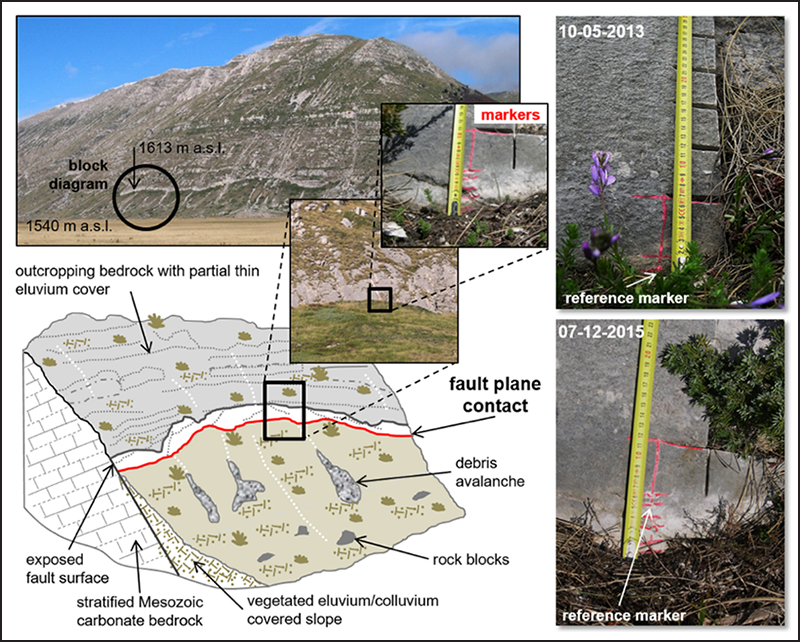Source: Journal of Geophysical Research: Earth Surface
When an earthquake strikes, vertical movement along a fault can create or add to a distinctive steplike feature known as a fault scarp. Bedrock exposure at the surface of a scarp can serve as a proxy for fault slip rates and for estimating the recurrence interval of future large earthquakes. However, new research by Kastelic et al. shows that non-earthquake-related factors also expose rock along faults in Italy’s Central Apennine Mountains.
Since 1975, scientists have studied fault scarps in a region of the Central Apennines known for its strong tremors, including the 2009 L’Aquila and 2016 Amatrice-Norcia quakes. Although some scientists have cautioned that nontectonic movement may contribute to fault scarp exposure here, several studies have attributed all rock exposure solely to seismic movement.
To investigate the potential role of nontectonic factors in the region, the team monitored 23 fault scarp sites along 12 different faults. At each site, the researchers marked the lower edge of the exposed rock surface with a short streak of waterproof paint, and they returned every few months to add a new mark.
After 3.4 years, the paint marks indicated that the exposed rock surface had grown by several centimeters at 22 of the sites. When the scientists compared their results to earthquake data, they found that none of the exposure could be attributed to earthquake-driven fault movement. Instead, precipitation data suggested that weathering processes and landslide movements were responsible.

The researchers conclude that many existing slip rates for Central Apennine faults are based on invalid assumptions, leading to incorrect estimates of the number of expected large earthquakes and hence of the local seismic hazard. They call for better methods of fault slip measurement to account for any nontectonic processes that may be in play. (Journal of Geophysical Research: Earth Surface, https://doi.org/10.1002/2016JF003953, 2017)
—Sarah Stanley, Freelance Writer
Citation:
Stanley, S. (2017), Faulty assumptions impair earthquake hazard assessment in Italy, Eos, 98, https://doi.org/10.1029/2017EO073171. Published on 16 May 2017.
Text © 2017. The authors. CC BY-NC-ND 3.0
Except where otherwise noted, images are subject to copyright. Any reuse without express permission from the copyright owner is prohibited.

